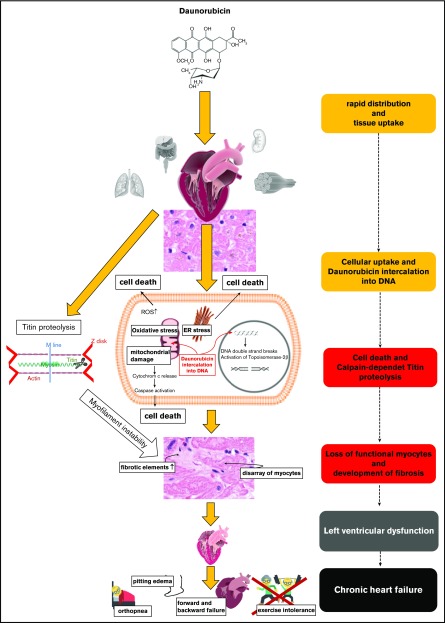Figure 1.
Mechanisms of anthracycline-related left ventricular dysfunction. The development of anthracycline-related left-ventricular dysfunction is multifactorial.15 After injection, daunorubicin is rapidly distributed to various tissues (eg, heart, lung, kidneys, spleen, liver, lean tissue). After cellular uptake, it is intercalated into mitochondrial and nuclear DNA. This causes double-strand breaks and activates topoisomerase-2β, which induces apoptosis and cellular death. It also causes mitochondrial dysfunction through the formation of reactive oxygen species (ROS) and endoplasmic reticulum (ER) stress. Other contributing mechanisms include titin proteolysis and inhibition of the neuregulin/ErbB pathway.15-17 All these processes contribute to the loss of functional cardiomyocytes, myocardial disarray, and development of interstitial fibrosis leading to left ventricular dysfunction and finally chronic heart failure.15,17,68 The histopathological pictures are a courtesy of Karin Klingel, Department of Cardiopathology, University Hospital Tübingen (Tübingen, Germany).

